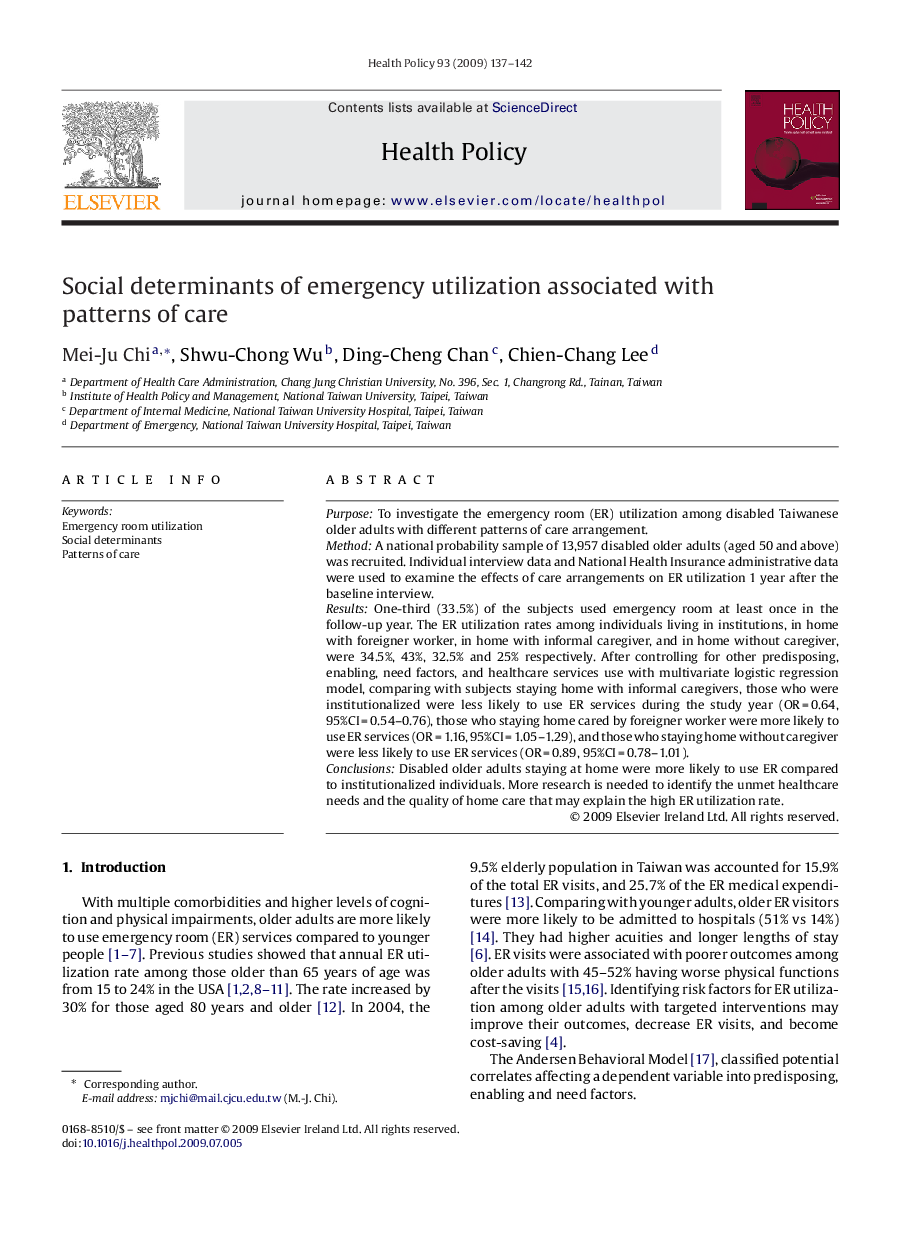| Article ID | Journal | Published Year | Pages | File Type |
|---|---|---|---|---|
| 6240206 | Health Policy | 2009 | 6 Pages |
PurposeTo investigate the emergency room (ER) utilization among disabled Taiwanese older adults with different patterns of care arrangement.MethodA national probability sample of 13,957 disabled older adults (aged 50 and above) was recruited. Individual interview data and National Health Insurance administrative data were used to examine the effects of care arrangements on ER utilization 1 year after the baseline interview.ResultsOne-third (33.5%) of the subjects used emergency room at least once in the follow-up year. The ER utilization rates among individuals living in institutions, in home with foreigner worker, in home with informal caregiver, and in home without caregiver, were 34.5%, 43%, 32.5% and 25% respectively. After controlling for other predisposing, enabling, need factors, and healthcare services use with multivariate logistic regression model, comparing with subjects staying home with informal caregivers, those who were institutionalized were less likely to use ER services during the study year (ORÂ =Â 0.64, 95%CIÂ =Â 0.54-0.76), those who staying home cared by foreigner worker were more likely to use ER services (ORÂ =Â 1.16, 95%CIÂ =Â 1.05-1.29), and those who staying home without caregiver were less likely to use ER services (ORÂ =Â 0.89, 95%CIÂ =Â 0.78-1.01).ConclusionsDisabled older adults staying at home were more likely to use ER compared to institutionalized individuals. More research is needed to identify the unmet healthcare needs and the quality of home care that may explain the high ER utilization rate.
